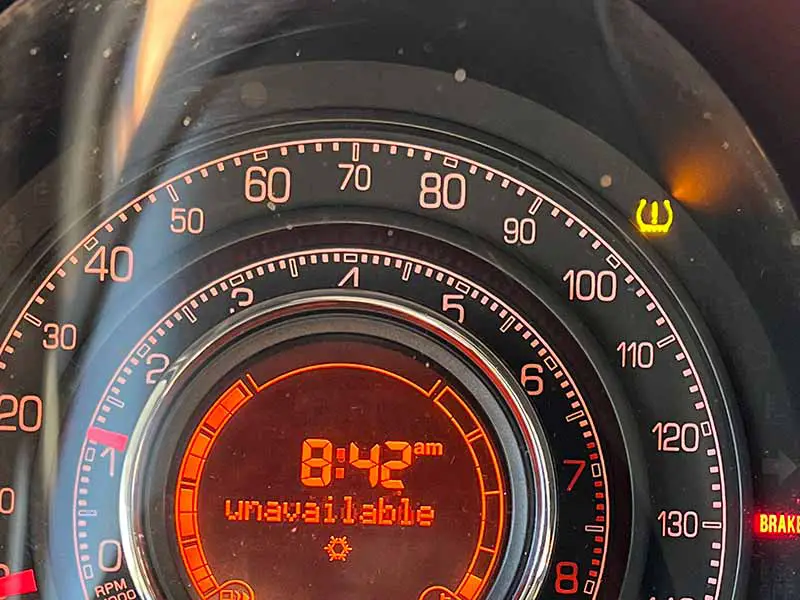Your tire pressure monitoring system can sometimes be a bit frustrating. A few different reasons can trigger a low tire pressure light on your vehicle’s dashboard.
Not having the correct tire air pressure is the most common and obvious reason, but chances are you’ve checked the air pressure and found it’s at the manufacturer’s suggested amount.
What else could be the problem?

Reasons Your Tire Pressure Light Won’t Go Off After Filling Your Tires
- You need to press the TPMS Reset Button
- You need to drive for a period of time to allow the system to recalibrate
- There is a dead battery in a TPMS sensor, or one is damaged
- The spare tire has a TPMS sensor, and the air pressure in it is low
- There is a slow leak in one or more tires
- The tire pressure wasn’t at the correct pressure
The tire pressure warning light shouldn’t be ignored, even if you checked your tires, and they are fine. You’ll want to be extra cautious until you understand why the TPMS warning light is still lit.
Let’s take a closer look.
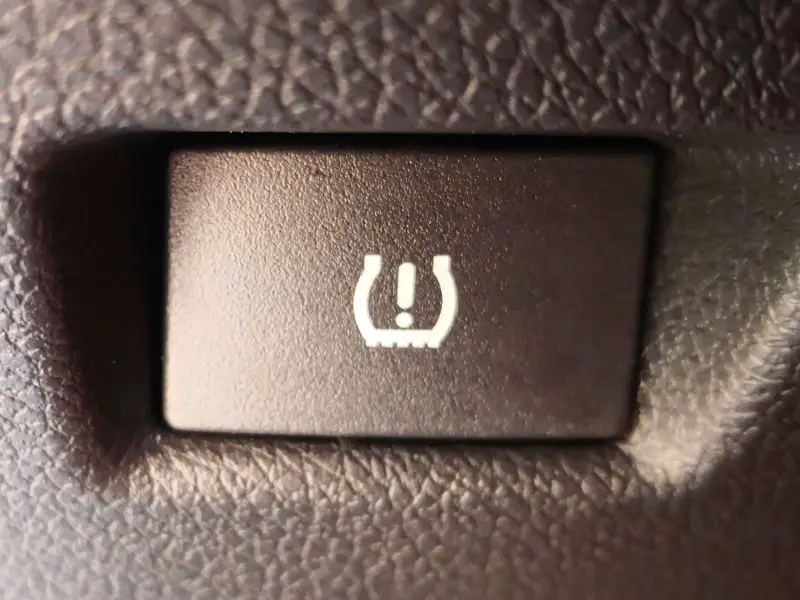
TPMS Reset Button
Unfortunately, not all tire pressure monitoring systems work the same. Some TPMS automatically detect the corrected tire pressure and turn off the warning light. Others require you to press a TPMS reset button after you’ve filled your tires to the correct air pressure.
Pressing the TPMS reset button is usually required for cars and trucks that use Indirect TPMS. However, Direct TPMS may still require pressing the button.
If you’d like to learn more about the two types of TPMS, scroll to the bottom of this article for a brief breakdown.
TPMS Reset Button Location
One of the most common questions we receive that is related to the tire pressure monitoring system is, “where’s the reset button?”.
There isn’t a consistent location that vehicle manufacturers have agreed. The location of this button varies between not just different manufacturers but also different vehicle models from the same manufacturer.
However, there tend to be some common locations, so we’ll list these spots before to help you find yours. You need to rely on your vehicle owner’s manual to find it if you can’t find yours in any of these locations.
- Underneath the steering wheel
- Left of the steering wheel
- Instrument cluster menu
- Infotainment system
- Center of dashboard
- Center console
- Inside the glove box
TPMS Recalibration
Your TPMS warning light usually won’t turn off the moment your tires have been filled to the proper air pressure. The tire pressure sensors are probably asleep since the vehicle is parked while the tires are inflated.
It’s common for the sensors only to operate while your car or truck is in motion to preserve battery life. Also, your tire pressure monitoring system will likely be designed to take a few measurements over a period of time to ensure the proper pressure has been restored.
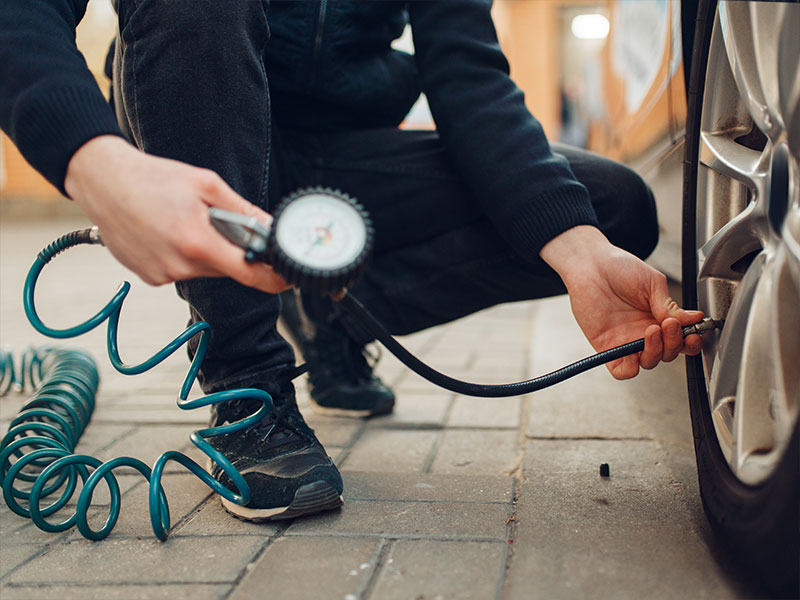
Driving for 10 or 15 minutes is usually all that is required to activate the TPMS sensors and allow the TPMS computer module time to take a few measurements from your vehicle’s tires and determine that the tire air pressure has been restored to the appropriate pressure.
Dead Or Damaged TPMS Sensor
If your TPMS warning light flashes for 60 to 90 seconds and then remains solid after starting your car or truck, there is a problem with your tire pressure monitoring system. The most common causes of TPMS failure are a dead battery or a damaged sensor.
The sensors in Direct TPMS require batteries to allow each tire pressure sensor to communicate wirelessly to the TPMS computer. Eventually, these batteries run out of power, and the sensors no longer function.
TPMS sensors have a battery life of 7 to 10 years. Some may last more or less time. Usually, due to how much use the tires the sensors are mounted inside receive. All batteries eventually die even without use, however.
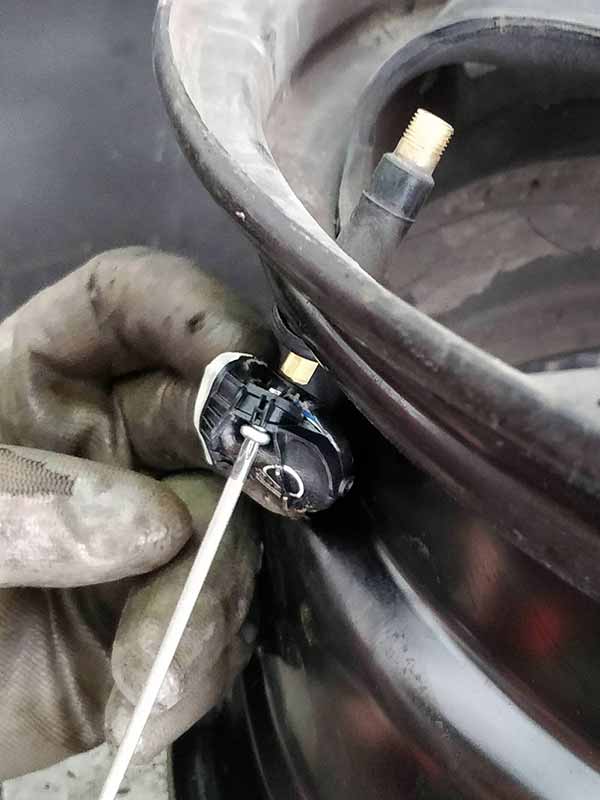
Since the battery is sealed inside the sensor, the sensor usually must be completely replaced instead of only replacing a battery.
Damaged sensors can occur due to potholes or curb strikes. They can also be damaged at the valve stem or accidentally damaged during a tire service procedure.
Indirect TPMS relies on the anti-lock brake system wheel speed sensors, which are wired directly to the vehicle’s electrical system and don’t require batteries.
Spare Tire Air Pressure
Even though vehicle manufacturers have been moving more and more toward not including a spare tire with new cars and trucks, there are still plenty on the road that do happen to include one.
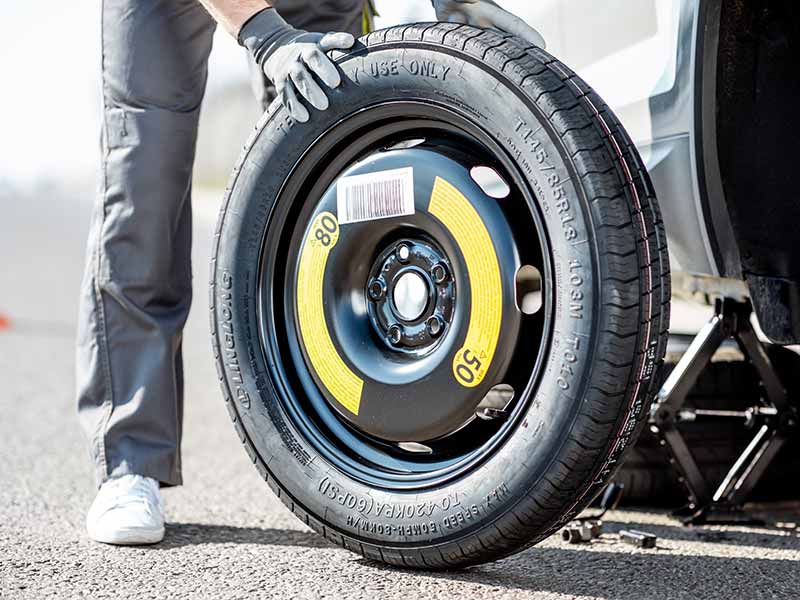
Some of these spare tires also include a TPMS sensor to help ensure that when you need to use your spare tire, it is inflated to the proper air pressure and ready to be used in an emergency.
These spare tires may need to have air added or may need to have the sensor replaced due to a dead battery.
Slow Leaks
Air leaks can be caused in many ways. Punctures from foreign objects embedded in your tire can prevent air from escaping rapidly, although a bit of air will slowly escape over time. A slow leak is often the cause of a TPMS warning light repeatedly being triggered.
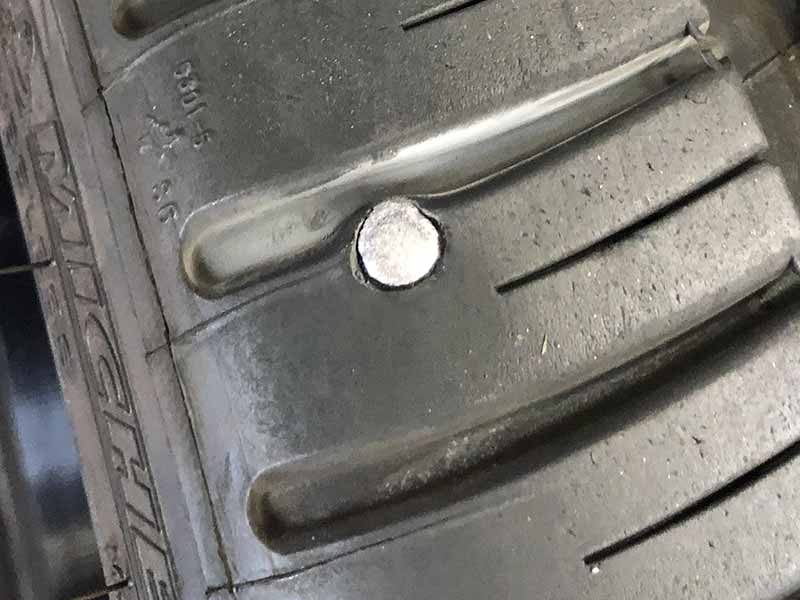
Damaged wheels can also be the source of low tire pressure over time. Potholes and curb strikes can cause damage to your wheels over time and lead to your tire not being able to seal against the wheel lip properly.
Valve stem damage is another common source of air pressure loss occurring slowly over time. Valve stems can easily become damaged for many different reasons. Giving them a quick visual inspection may identify the source of your trouble.
Finding The Correct Tire Pressure
It’s common for people to need clarification about what the actual correct tire air pressure should be in their tires.
Some people may believe there is a universal pressure that all tires are inflated. Others may look at the tire itself to find the pressure to inflate the tires.
The proper tire pressure for your car or truck is almost always found on the tire information sticker in the driver’s door jamb. If, for some reason, your vehicle doesn’t have a tire information sticker here, you should refer to your vehicle’s owner’s manual.

You should also pay attention to whether there are different tire pressures listed for the front and rear tires. Most vehicles will have the same pressure for the front tires and rear, but some require different pressures between the front and back.
It’s also important to check your tire pressure with a proper tire gauge. Some gauges can get damaged and read incorrectly when they get some age. This is more common with slide gauges at gas station air pumps.
Direct Vs Indirect TPMS
It’s important to understand that there are two TPMS systems: Direct and Indirect. You should check your owner’s manual to determine which type of system your vehicle uses.
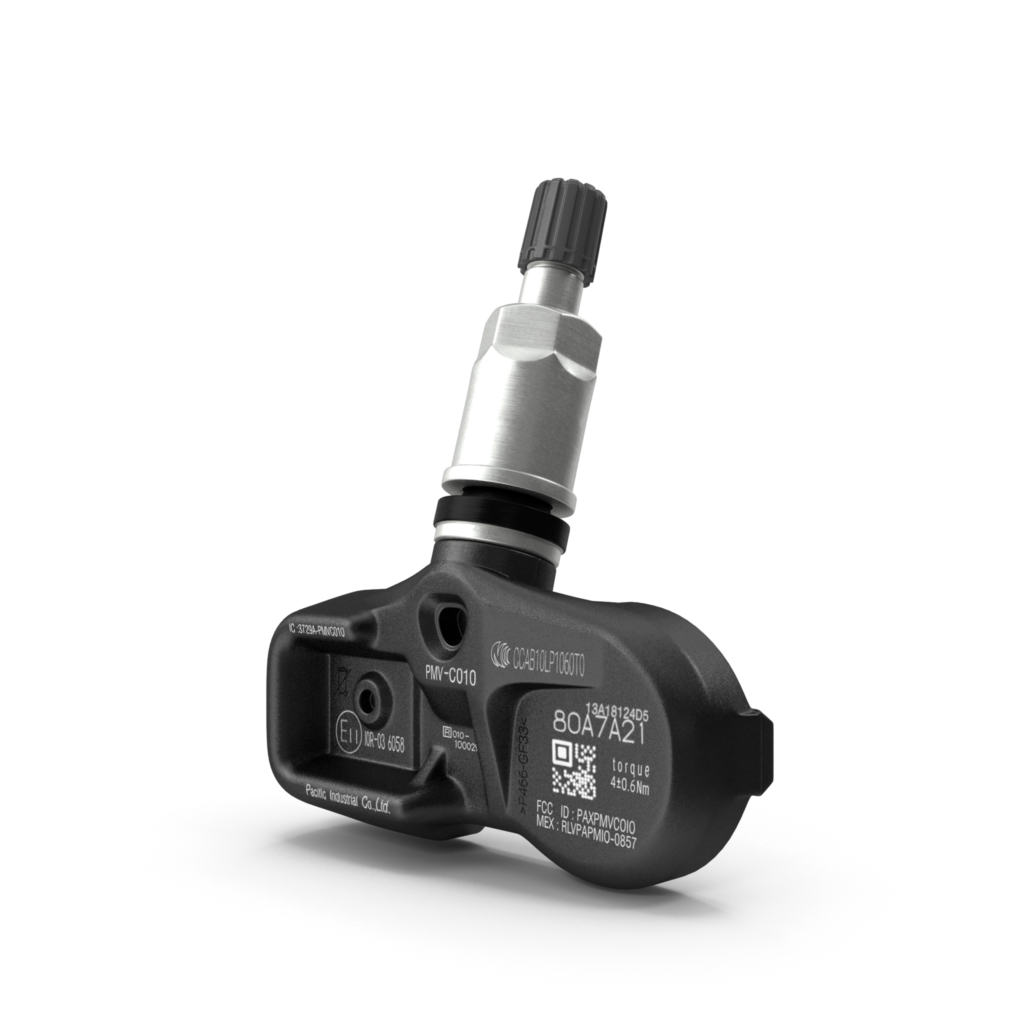
Direct TPMS
Direct TPMS uses battery-powered wireless sensors inside each tire to transmit the individual tire pressures to the TPMS computer. Not only can this system warn you of low tire pressure, but you can also check the air pressure in each tire from the driver’s seat at your convenience.
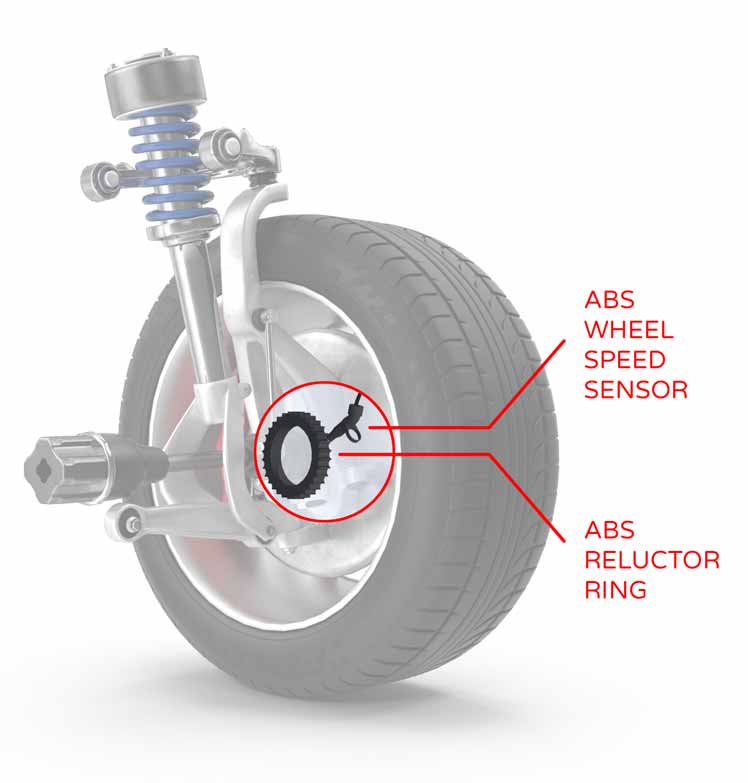
Indirect TPMS
Indirect TPMS uses the antilock braking system wheel speed sensors to estimate whether a tire has lost air pressure. When the speed of a tire changes relative to the rate of the other tires and the baseline target is enough, the system will trigger a low tire pressure light.
Resources
Below are some links you may find helpful when learning about tires
- TPMS light on? What it means and what you need to do – Bridgestone
- Why is my TPMS light on? – Pep Boys
Final Thoughts
Hopefully, this guide has helped you resolve the cause of your tire pressure warning light.
One final recommendation I’d like to leave you with is that you purchase a portable air compressor to keep in your car or truck. If your TPMS warning light is triggered, you should check your tires immediately.
Your tire pressure monitoring system is designed to alert you to a drop in pressure greater than 25%. This is significant, and waiting until you’ve reached a gas station with a functioning air pump may not be safe or even possible.

Craftsman V20 Inflator Portable Air Compressor
There are several quality portable air compressors on the market, but if you’d like a recommendation, I have the Craftsman V20 Inflator in my trunk.
Good luck and happy motoring.
